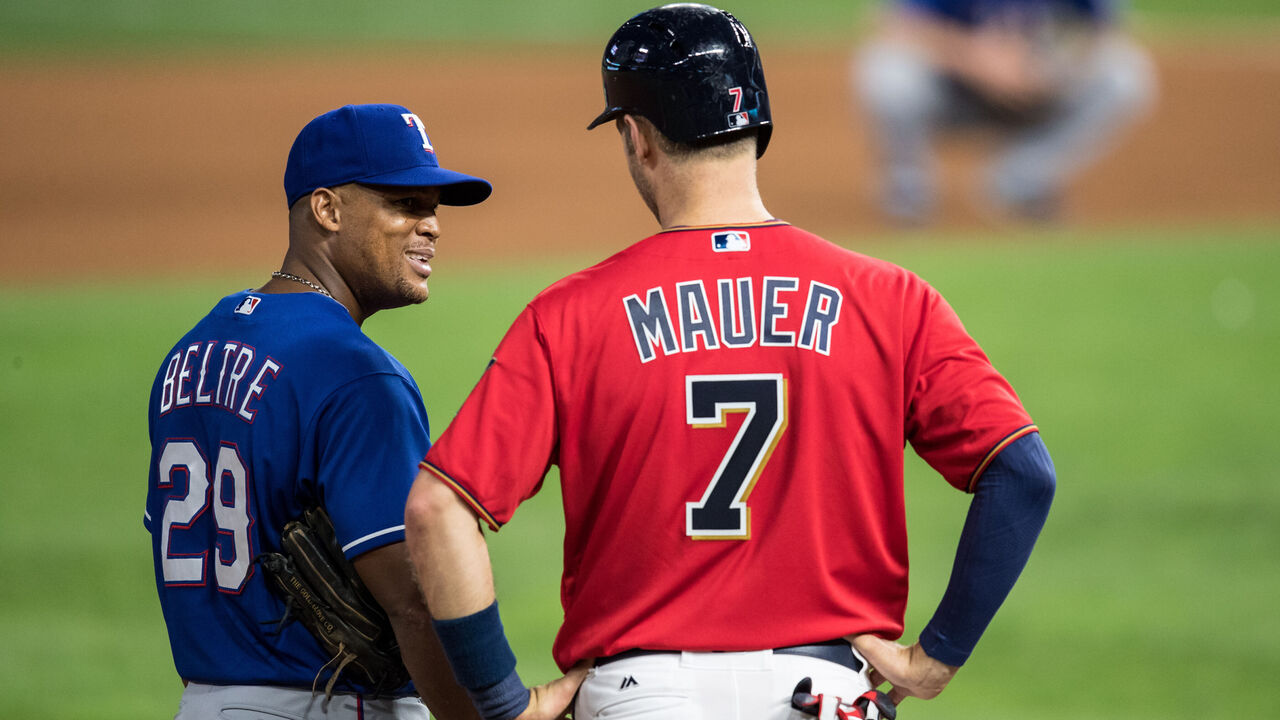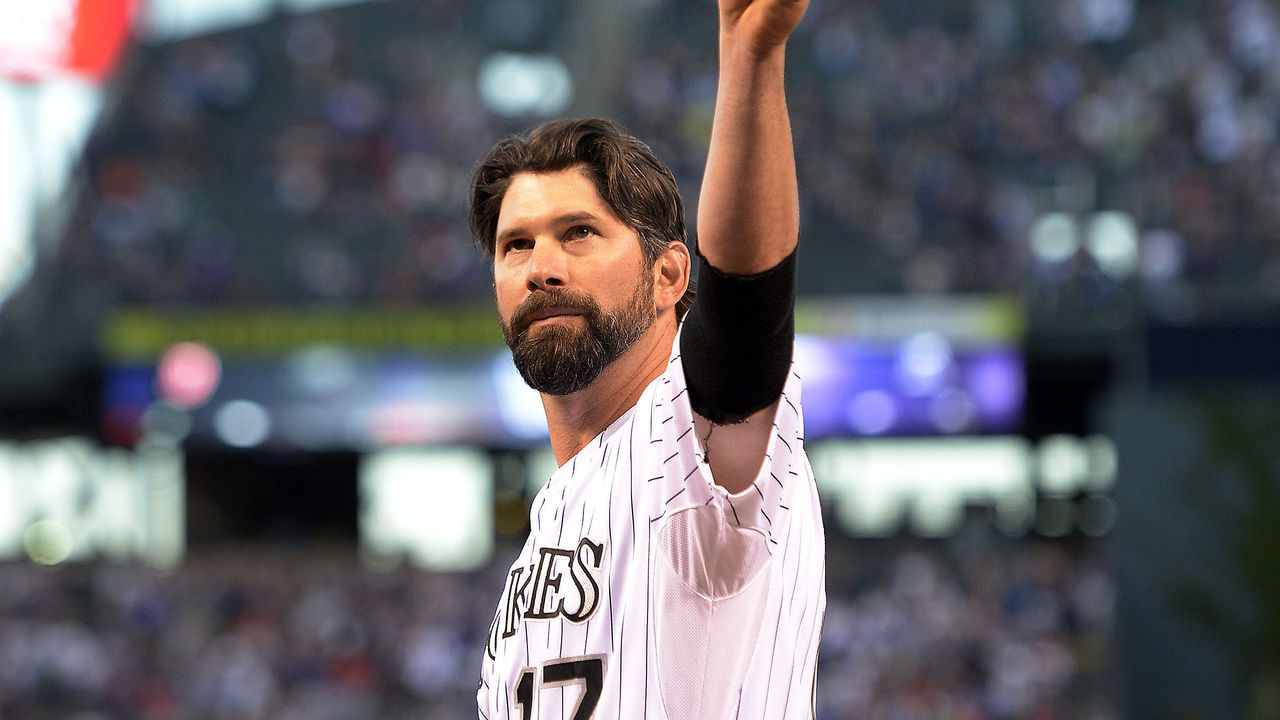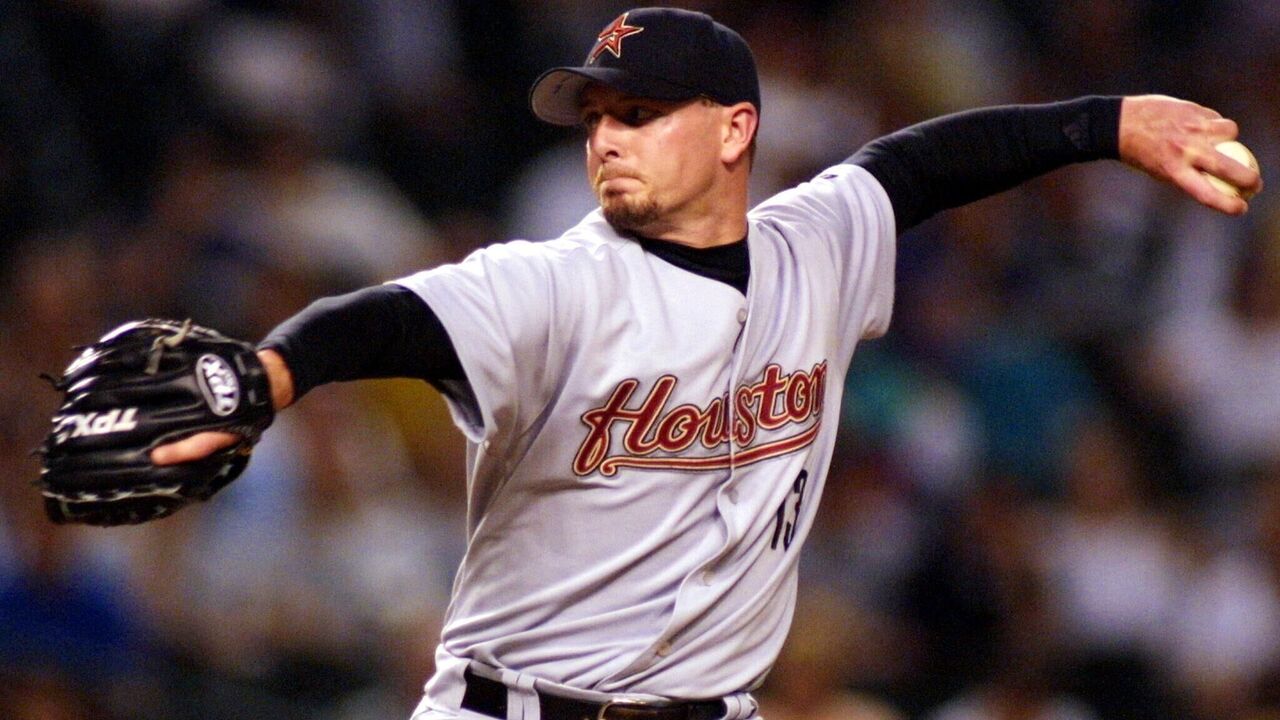The Hall remains too exclusive, but is change coming?
On Tuesday, the Baseball Writers' Association of America voted in as many players into the National Baseball Hall of Fame as it had in the previous three years combined.
Adrián Beltré, Todd Helton, and Joe Mauer all received at least 75% of the vote, the necessary level for enshrinement.
Beltré's candidacy was nearly flawless, and his name was checked on 95% of ballots. He compiled more than 3,000 hits and hit 477 home runs while playing elite defense at third base for two decades. The eye test and advanced numbers were in agreement on his resume.
Mauer was an elite two-way catcher until injuries moved him off the position in the second half of his career. But even if we discount his later performance at first base and DH, his peak years at catcher were about as productive as there have been in the game's history. Only Gary Carter, Johnny Bench, Mike Piazza, and Ivan Rodriguez enjoyed better peaks at catcher as judged by WAR7, the top seven seasons of a player's career measured by Baseball Reference's metric.

And for those who want to diminish Helton's record because he played home games at Coors Field, consider this: He posted a 121 wRC+ on the road during his career with the Rockies, while his Rockies' teammates averaged a 79.5 wRC+ away from mile-high air during his career.
All hitters generally perform worse on the road for a variety of reasons, but it's even more difficult to leave Coors Field because of how the altitude change affects performance and pitch movement, etc. Helton hit like an All-Star on the road while his teammates were essentially well below replacement level.
They're all worthy players. They belong. (And I selected each on my ballot.)
But while the museum in Cooperstown, New York, will add three bronze plaques with a relatively robust class this summer, Hall of Fame membership among modern players remains too light, and this election cycle did little to alleviate the logjam.
While some may believe I'm in the "large Hall" camp because I chose the maximum 10 players in my first two years as a voter, I'm not an advocate of a large or small Hall, just one that is rightsized.

Consider that of the 17,610 major-league players to debut between 1871-1999, only 1.5% have been enshrined. That's a high bar to cross and it should be. But the modern player isn't represented at the same rate as past generations.
Hall induction rates have decreased each decade since the 1950s when 2.03% to debut that decade were inducted. That fell to 1.83% of players to debut in the 1960s, 1.37% of the 1970s debuts, and 1.23% among those to first play in the 1980s.
And among players to debut in the 1990s, writers have elected fewer than 1% of players (0.9%), the lowest overall induction rate of any decade.
Players who debuted in the 1890s or 1920s have twice as good a chance of being in the Hall than if they entered the majors in the 1980s and 1990s.
While players should be judged against their peers and era, how would Old Hoss Radbourn truly fare today? Was the late 19th century really the pinnacle of baseball performance?
While more players from the 1990s will certainly enter Cooperstown, the decade still looks to continue the recent downward trend. It's increasingly a small Hall in relative terms.
More players should have been elected in this voting cycle.
Players have a maximum of 10 years on the ballot before the BBWAA can no longer consider them. This was Gary Sheffield's final year on the ballot and he failed to reach 75%. He's one of those overlooked modern players. He eclipsed 500 home runs for his career, and he ranks comfortably within the existing right field Hall of Fame population in WAR and WAR7.
If Sheffield is going to reach Cooperstown, he'll have to be inducted by a supplemental era-specific committee. The committees, the Hall's appeal courts, don't get everything right (see: Harold Baines) but they've been created, in part, because the BBWAA has been so restrictive. Committees of one sort or another going back to the 1930s have enshrined about half the players in the Hall.
Chase Utley was selected on 28.7% of ballots in his first year of eligibility despite ranking ninth all time in WAR7 at second base. The eight players ahead of him at second base who are eligible to be included are in the Hall, as are several below him.
From his age 26-31 seasons, he averaged a .298/.388/.523 slash line and a 133 OPS+, which adjusts OPS for ballpark and run-scoring environments (100 is league average).

Some voters have taken hard stances against players tied to PED use like Barry Bonds, Alex Rodriguez (34.8%), and Manny Ramirez (32.5%). And given that character and sportsmanship are supposed to be two criteria voters account for, that's a defensible stance.
But even if one doesn't want to vote for players tied to steroids, Andruw Jones and Carlos Beltrán certainly fit the bill as Hall of Fame center fielders.
Even Bobby Abreu - who led right fielders in WAR from 1998-2010, and is one of three players all time to record 1,400 runs scored, 400 steals, 288 home runs, and a .395 on-base mark or better, joining Bonds and Rickey Henderson - has a case for inclusion. This voter believes he does but he only garnered 14.8% of the vote in his fifth year on the ballot.
If one examines the entire population in the Hall at a player's respective position and that player's peak and career production fits them comfortably within that group set by precedent, they belong.

Closer Billy Wagner (73.9%) fell just short. And while he stands a good chance to get in next year - his 10th and final year on the ballot - getting in this year would have helped clear the logjam.
The 2025 ballot is going to continue to be crowded, too.
Ichiro Suzuki and CC Sabathia will debut next year and they figure to have excellent chances. Félix Hernández will also be on the ballot and his peak deserves consideration.
Perhaps there are signs the voting will become more inclusive, as there were significant changes in voting patterns this year.
For starters, no blank ballots were submitted this year. That's progress. A blank ballot in recent years is indefensible. Moreover, the average ballot contained seven names, which is an increase from 5.86 names in 2023. Of the voting body, 24.4% checked a maximum of 10 names, an increase from 13.9% a year earlier.
The BBWAA is perhaps warming up to the modern player.
The electorate's also changing. It's getting younger and isn't stuck on conventional measures of worth. For example, in this era, it's more difficult for pitchers to accumulate volume stats like wins, and for batters to compile 3,000 hits given modern strikeout rates. Evaluation processes must change to place less responsibility on future committees.
Each generation of players must be judged by what they could control, and how they performed against their peers. There's little doubt that players today are the most talented to ever play baseball, in part due to advances in player-development programs, data analysis, and nutrition advances. The modern player deserves more representation.
Voters didn't get anything wrong with the three who got the call Tuesday. Beltré, Helton, and Mauer are all deserving, but we didn't go far enough.
Travis Sawchik is theScore's senior baseball writer.